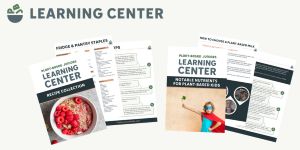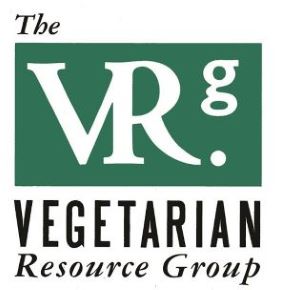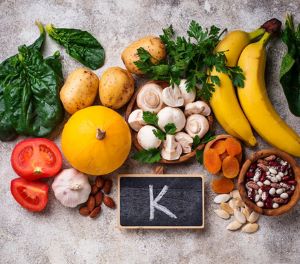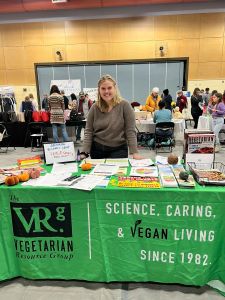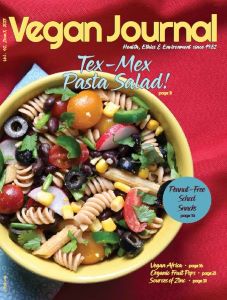Vegan Restaurants Added to The Vegetarian Resource Group’s Guide to Veggie Restaurants in the USA and Canada
The Vegetarian Resource Group maintains an online Guide to Vegan/Vegetarian Restaurants in the USA and Canada. Here are some recent vegan restaurant additions. The entire guide can be found here: http://www.vrg.org/restaurant/index.php
To support the updating of this online restaurant guide, please donate at: www.vrg.org/donate
Here are some new additions to VRG’s guide:
Banu Vegan, 2534 S. Roxboro St., Durham, NC 27707
This restaurant uses fresh ingredients sourced from local farmers’ markets. Thursday special includes “Spanish chikn/Spanish mushrooms with black beans, rainbow rice, avocado, kale salad, and pineapple cake.” Menu also includes burgers and burritos (served with chips and Sofrito salsa), sandwiches and subs (e.g., “Skrimp Po Boy,” which is vegan shrimp made of tapioca starch, seasoned with onions, peppers, lettuce, tomato, and topped with house Cajun sauce), also served with chips and salsa. Additionally, you’ll find appetizers, salads, desserts, as well as a separate Sunday Brunch Menu.
Dead Bird Brewing, 1726 N. 5th St., Milwaukee, WI 53212
This is a brewery but also offering all vegan appetizers and pizza. Appetizers include Togarashi carrot taco (roasted carrots tossed in an orange sesame togarashi sauce, topped with cilantro cabbage slaw, red onions, and crispy fried wonton strips) and Backyard BBQ (vegan beef or Cedar Teeth Chick’Un, sweet BBQ sauce, cabbage slaw, raw red onions, and jalapenos). Pizza options include “SHMO (house red sauce, vegan mozzarella, spicy Italian sausage, white onions, and fresh mushrooms”).
El Hongo Magico, XMarket, 804 W. Montrose Ave., Chicago, IL 60613
El Hongo Mágico (The Magic Mushroom) Taqueria specializes in tacos and other Mexican favorites made with culinary mushrooms for their “magic and versatility.” It is located uptown in the all-vegan food hall XMarket, which frequently hosts special events such as comedy and karaoke.
Make Waves, 3rd Street Market Hall, 275 W. Wisconsin Ave., Ste. 100, Milwaukee, WI 53203
Wave bowls include Citrus Surf (mango base, granola, pitaya orange base, candied orange, lemon and pineapple slices, toasted coconut, almond slices, pineapple honee, and maple granola); various Boba drinks and smoothies; flatbread wraps and toast include Veggie Pesto (basil hummus, chickpea croutons, arugula, cucumber, sundried tomato, feta, and lemon vinaigrette served on toasted flatbread) and Breakfast Flatbread (carrot bacon, sprouts, roasted red pepper, cheddar cheese, avocado, Just Egg, and chipotle aioli served on toasted flatbread).
Roughage Eatery, 126 Sherbrook St., Winnipeg, Manitoba R3G 2B4, Canada
Roughage Eatery is a vegan comfort food haven. Their menu boasts an amazing Mac & Cheeze, topped with house-made Bacun, broccoli, and cashew parm. They also offer a one-of-a-kind Apple Brie Sandwich and a classic NoBSLT, a creative spin on the American BLT. On Saturdays, they serve breakfast, and when the weather gets cold, you can warm up with their delicious soups. Please note that they are searching for a new location.
Veganarie – Resto Vegane, 19H Rue Du Centre Commercial, Pierrefonds, QC, H8Y 2N9 Canada
Plant-based vegan Greek inspired restaurant serving your favorite Greek, American, and Canadian comfort food classics such as fries, falafel pitas, gyro pitas, veggie burgers, and more.
VeGreen Noodle, 2660 Mall of Georgia Blvd., Ste. 100a, Buford, GA 30519
This ambitious restaurant offers over 50+ dishes that are all 100% plant-based. When it comes to starters, the choices are tough to make. You can try the Salt Pepper Calamari, kale chips, mini Soup Buns, and the list goes on. As the name suggests, they offer noodles in a variety of flavors, but they also provide stir-fry noodles, fried rice, vegan sushi rolls, and entrées that we all know and love. Don’t forget to give their smoothies or teas a try.
Wild in the Treats, 183 First Ave., Atlantic Highlands, NJ 07716
This is a gluten-free vegan bakery. Menu items include granola bars, scones, chocolate whiskey ganache, brownies, jelly bars, biscotti, muffins, turnovers, large cakes, cheesecakes, bundts, and even applesauce molasses dog treats.


